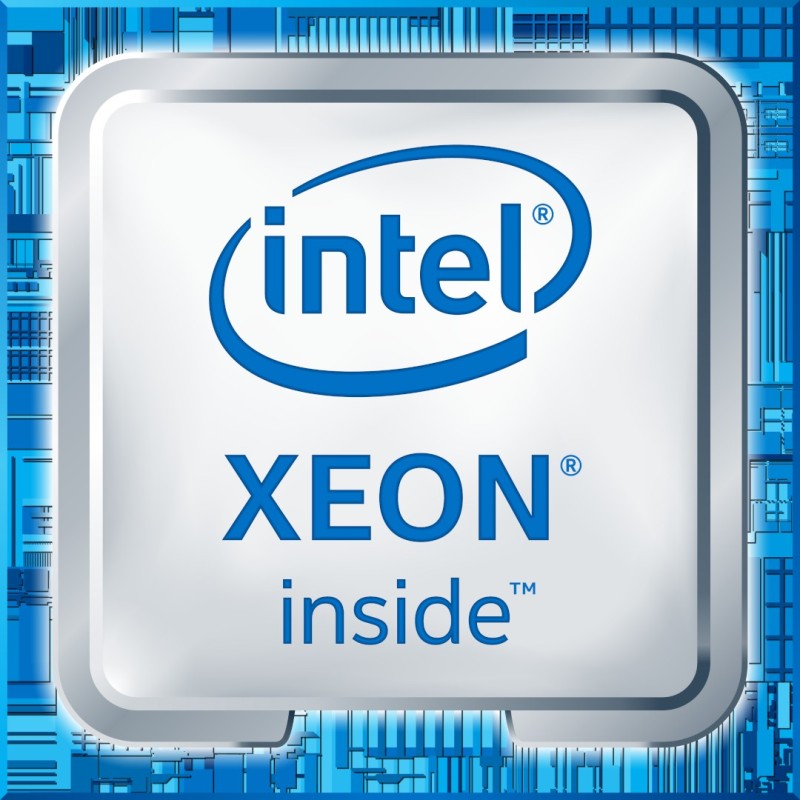- Out-of-Stock

Banner



Intel Xeon E-2226G, Intel Xeon E, LGA 1151 (Socket H4), 14 nm, Intel, E-2226G, 3.4 GHz
 Safety policies
Safety policies
All communications through the site are encrypted with SSL certificate.
 Policies for shipments
Policies for shipments
You can choose the courier according to preferences and timing. Each shipment is insured.
| Processore | |
| Produttore processore | Intel |
| Famiglia processore | Intel Xeon E |
| Modello del processore | E-2226G |
| Frequenza base del processore | 3,4 GHz |
| Numero di core del processore | 6 |
| Presa per processore | LGA 1151 (Socket H4) |
| Litografia processore | 14 nm |
| Scatola | Sì |
| Raffreddatore incluso | Sì |
| Componente per | Server/workstation |
| Numero di threads del processore | 6 |
| Bus di sistema | 8 GT/s |
| Modalità di funzionamento del processore | 64-bit |
| Frequenza del processore turbo massima | 4,7 GHz |
| Cache processore | 12 MB |
| Tipo di cache del processore | Cache intelligente |
| Thermal Design Power (TDP) | 80 W |
| Nome in codice del processore | Coffee Lake |
| Processore ARK ID | 191038 |
| Memoria | |
| Memoria interna massima supportata dal processore | 128 GB |
| Tipologie di memoria supportati dal processore | DDR4-SDRAM |
| Velocità memory clock supportate dal processore | 2666 MHz |
| Canali di memoria | Dual-channel |
| Data Integrity Check (verifica integrità dati) | Sì |
| Grafica | |
| Adattatore di scheda grafica separato | No |
| Modello scheda grafica integrata | Intel UHD Graphics P630 |
| Memoria massima dell'adattatore della scheda grafica installata | 128 GB |
| Frequenza dinamica dell'adattatore della scheda grafica integrata (max) | 1200 MHz |
| Numero di visualizzazioni (scheda grafica integrata) | 3 |
| Supporto 4K per adattatore grafico a bordo | Sì |
| Versione OpenGL dell'adattatore della scheda grafica integrata | 4.5 |
| Risoluzione massima dell'adattatore della scheda grafica integrata (HDMI) | 4096 x 2160 Pixel |
| Frequenza di aggiornamento dell'adattatore grafico a bordo alla massima risoluzione (HDMI) | 24 Hz |
| ID dell'adattatore della scheda grafica installata | 0x3E96 |
| Scheda grafica dedicata | Non disponibile |
| Caratteristiche | |
| Tecnologia Thermal Monitoring | Sì |
| Segmento di mercato | Server |
| Numero massimo di corsie Express PCI | 16 |
| Versione degli slot PCI Express | 3.0 |
| configurazione PCI Express | 1x16, 2x8, 1x8+2x4 |
| Istruzioni supportate | SSE4.1, SSE4.2, AVX 2.0 |
| Revisione PCI Express CEM | 3.0 |
| Numero di classificazione del controllo delle esportazioni (ECCN) | 5A992C |
| Sistema di tracciamento automatico della classificazione delle merci (CCATS) | G077159 |
| Caratteristiche speciali del processore | |
| Intel® Memory Protection Extensions (Intel® MPX) | Sì |
| Intel® Turbo Boost Technology 2.0 frequency | 4,7 GHz |
| Intel® Transactional Synchronization Extensions | Sì |
| Ammissibilità della piattaforma Intel® vPro™ | Sì |
| Condizioni ambientali | |
| Tjunction | 100 °C |
| Dimensioni e peso | |
| Dimensione della confezione del processore | 37.5mm x 37.5mm |
| Altre caratteristiche | |
| RAM massima supportata | 128 GB |
Data sheet
Reference: CD8068904657701
Brand: INTEL
Reference: BX8070110500
Brand: Intel
Reference: CD8069504393600
Brand: Intel
Reference: CM8070804497213
Brand: INTEL
Reference: BX8070811600K
Brand: Intel
Reference: BX80673W2123
Brand: Intel
Reference: BX8070811700F
Brand: Intel
Reference: BX80660E52609V4
Brand: Intel
Reference: BX8071512900KS
Brand: INTEL
Reference: BX80708W1350
Brand: INTEL
Reference: BX8071512500
Brand: Intel
Reference: CM8070804496113
Brand: INTEL
Reference: BX8070110600
Brand: Intel
Reference: BX8071512100
Brand: Intel
Reference: BX8069510980XE
Brand: Intel
Reference: BX8070811700K
Brand: Intel

Intel Xeon E-2226G, Intel Xeon E, LGA 1151 (Socket H4), 14 nm, Intel, E-2226G, 3.4 GHz
check_circle
check_circle